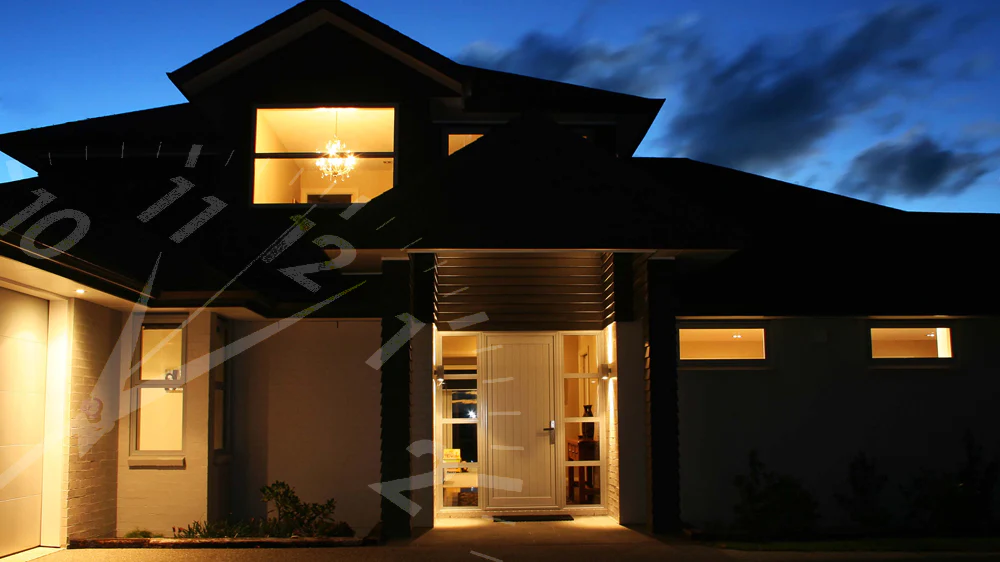The Harsh Reality of Home Security Systems & Their Response Times

Research tells us that about 60% of burglars will avoid houses with a security system. And you’re 300% more likely to be burglarized if you don’t have one. But that also means that 40% of thieves don’t care either way… and this statistic continues to grow year after year.
Couple that with the fact that one American home is burglarized every 9 seconds, and there are a lot of break-ins taking place at homes with and without security systems in place.
If you’re the unfortunate homeowner who has a break-in with a home security system installed, there is a harsh reality that is very unsettling.
Response Time Makes the Difference
During an attempted burglary, your security provider’s response time is the difference between a successful robbery and a foiled attempt. If you believe your security system and the monthly fee you pay have bought you an immediate response, you’re going to be very disappointed.
You may be surprised to learn that response times can vary wildly from company to company. And for most, you’re measuring this time in minutes.
Response time is actually the total for two separate actions: the allowed time to enter a code before the alarm goes off and the time it takes the security provider to be notified of a triggered alarm.
It can quickly add up:

With many providers, you can set the delay between entering and an alarm triggering. This gives you time to punch in a disarm code. Some, like Brinks, may be up to 45 seconds. ADT ranges from 10 to 30 seconds and Frontpoint ranges from 30 to 45 seconds, while Guardian and Xfinity are up to a solid minute. That’s how long it takes for the alarm to go off in the first place. These numbers represent the average. Several providers allow the homeowner to set the delay up to 2-3 minutes.
Then, once an alarm is actually triggered, the service provider needs to be notified and initiate their response. That can easily tack on another 15-45 seconds or more depending on a variety of factors like cell reception and whether you’re using a wireless or landline system.
This brings the total time up to 45 seconds (at the low end) to two and a half minutes or more. Each second that goes by feels like a lifetime, especially when an intruder is inside your home.
Plus, as all this time has gone by, no one has notified the homeowner or the authorities yet.
Typical Alarm Response Protocol
For most providers in the home security industry, the typical response after a triggered alarm is to attempt to reach the homeowner or primary contact. Not once, but two or even three times. If the provider can’t make contact or the homeowners don’t know why the alarm is going off, then and only then are the police informed of a possible break-in.
From start to finish, you’re looking at an average of eight minutes before the police are notified. Then add however long it then takes them to respond (an average of ten minutes, according to most sources).

That’s where the traditional alarm system breaks down: most burglars can break in, take what they want, damage your home, and get out in minutes.
And the police? They probably aren’t coming anyway.
The Problem for Police
Here’s the harsh reality: anywhere from 90% to 99% of security alarms are false alarms. Forgotten codes, accidental activations, a squirrel on the front porch, a delivery, or even a deflating balloon can all trigger an alarm unnecessarily.
With statistics like that, is it any wonder that most police departments can’t or won’t prioritize home security alarms?
U.S. police agencies respond to 36+ million home security alarms every year at the cost of $1.8 billion. Most of them are false alarms, wasting valuable time and money while taking resources away from actual crimes in progress.
It’s unsustainable. Something had to give.
And something did give. Authorities have stopped responding.
Are the Police Actually Coming?
More than 40% of Americans living in cities of 50,000 or more have a police department that either does not guarantee a response or won’t respond to a residential security alarm.

The situation is even worse for those in cities with one million or more. Out of these city’s departments, 80% can’t guarantee or definitely will not respond. Places like San Jose, Detroit, Seattle, Las Vegas, Milwaukee, and San Francisco all have an official no-response policy. Learn about your city’s alarm response policy here.
Even departments that do respond have to prioritize calls based on the available information, the number of officers on duty, the number of calls, and more.
An activated motion detector or security alarm without additional details is, unfortunately, not a top priority. Police will respond only after dealing with high-priority calls and emergencies. And who can say how long that will take?
False alarms have made security systems virtually worthless during a burglary. But there is a solution that does work.
Crime verification.
Non-Verified vs. Verified Crimes
If an alarm goes off for unknown reasons, the data says it’s likely a false alarm and police treat it as such. It’s a non-verified crime. That means a slow police response… if any.
However, if the home security company can verify that a crime is in progress, then law enforcement will respond accordingly. This verification typically requires eyes on the scene before contacting the authorities. Verification reduces false alarms by 95% while significantly decreasing the average response time.
But sending authorities to the physical location still leaves valuable minutes unattended to that you can’t afford to lose.
What you need is not only fast and convenient crime verification but also a system that also engages with perpetrators.
The Solution to Slow Alarm Response Times
The ideal security solution?
- Quickly weed out false threats such as pets, visitors, animals, and deliveries.
- Identify an actual threat at the perimeter of your home, not once someone has set foot in your home.
- Put human eyes, ears, and voices on the scene immediately.
- Provide law enforcement with up-to-the-second details of a verified crime in progress when necessary.
Such a solution takes the total response time from minutes to seconds. It’s the solution that the police would design themselves. And it’s the solution that prevents crimes instead of just detecting them.
So what security solution does that? A proactive surveillance camera system with live security guards, like Deep Sentinel.
Any home security system is better than no home security system. But without real-time human verification and engagement, it’s a false sense of security at best. Deep Sentinel takes real-time steps to deter criminals and alert police as the situation unfolds beyond the front door. All in 30 seconds or less.
When selecting your next security solution, count every second.
Because every second counts.
Need a Solution that Prevents Crime?
Deep Sentinel is the only security technology that delivers the experience of a personal guard on every customer’s home and business. Visit deepsentinel.com or call 833-983-6006

